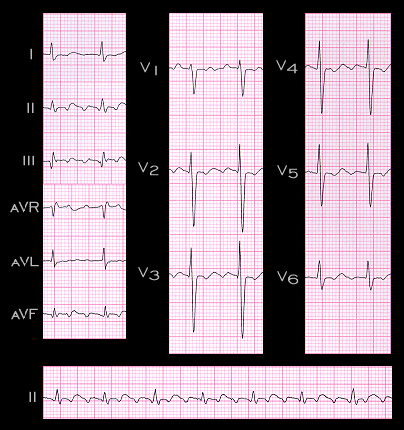
Another example of type I flutter is shown here. Again, the flutter waves are in inverted in leads II, III and aVF and upright in aVR, reflecting the superior direction of the atrial depolarization associated with the counterclockwise rotation of the impulse around the re-entry circuit. As in the previous example, the flutter rate is 300, but this time the ventricular rate is 100 because there is 3:1 AV block. The third flutter wave associated with each QRS complex is difficult to appreciate because it is concealed within the initial portion of the QRS complex.
